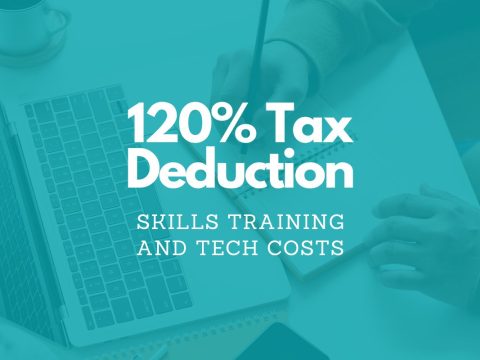Viewpoint – Summer 2010
Christmas fringe benefits
Christmas is fast approaching and it is time to consider the tax implications of all the Christmas cheer you provide your staff and clients.
Below is a table showing the tax implications of having the party on your premises or having it off-site.
| For parties held on the premises: |
|
|
Furthermore, if you give a gift at the Christmas party the outcome of the above table may be affected. If the combined total of the gifts and the party exceeds $300 per employee consider giving the gifts at a separate occasion.
The above applies if you are not a tax-exempt organisation and do not use the 50-50 method for meal entertainment.
Whichever approach you take, have fun and enjoy Christmas!
Allworths Office will be closing at 3.00pm Thursday 23 December 2010 and
re-opening Tuesday 4 January 2011
FBT motor vehicle log book reminder
If you use the operating cost method for calculating your motor vehicle fringe benefits tax (FBT) and you have not completed a log book, now is the time to start.
If you complete a logbook within 12 weeks from the end of the FBT year it can be used for the preceding year. You also need to complete a new logbook every five years.
A logbook must be maintained for a continuous period of 12 weeks and contain the following information:
- The date your journey began and ended (multiple journeys are treated as a single entry)
- The odometer reading of the car at the start and end of your journey
- The number of kilometres travelled by the car
- The purpose of the travel.
The odometer readings of the car must be maintained at the start and end of the FBT year.
Superannuation contributions
There are clearly defined limits of superannuation contributions to a superannuation fund.
It is important to be aware of what the Australian Taxation Office (ATO) regards as a ‘contribution’.
The ATO states the following:
- Anything that increases the capital value of the fund can be a contribution
- Contributions are more than just a deposit of money into the fund.
Set out below is the ATO table Taxation Ruling: TR 2010/1 regarding contribution types that can be made to a fund:
Money | In-Specie Asset Transfers | Paying Fund Expenses |
| Increasing value of fund asset | Forgiving a fund debt | Meeting a fund liability |
| Providing services above market rate | Meeting an obligation as guarantor | Some discretionary trust distribution |
Furthermore, the ATO has released the following table which sets out the timing of contributions (TR 2010/1):
| Funds transferred by… | Contribution is made … |
| Cash payment | When received by the fund |
| Electronic transfer | When credited to the fund’s account |
| Money order/bank cheque | When received by the fund unless dishonoured |
| Personal cheque | When received by the fund so long as it is promptly presented (within a few business days) and honoured |
| Post dated cheque | No earlier than the date on the cheque |
It is important to be aware that if you make excess contributions, you may be subject to an excess contribution tax of 46.5 per cent, or 93 per cent of the contribution.
Please consult with your Chartered Accountant before you consider making significant contributions to your superannuation fund.
Contractor or employee?
With more businesses now using contract labour the Australian Taxation Office has begun focusing on contractors and their obligation to pay the 9 per cent Superannuation Guarantee Levy.
Section 12(3) of the Superannuation Guarantee (Administration) Act 1992 (Cwlth) provides that if the contract is ‘wholly or principally for labour’ then that person is deemed an employee and therefore has a Superannuation Guarantee (SG) levy obligation.
The common law principal to determine whether a tax payer is an employee (an individual) is tested against the following:
- The control the employer has
- The basis of the contract
- The ability to sub contract
- Who bears the risk of the project.
Recently there have been significant cases regarding the superannuation guarantee. In general, the courts have taken a more expansive view when testing whether an individual is employed ‘wholly or principally for labour’.
While the impact on individuals is clear, there is now a more a significant focus on interposed entities (e.g. companies); more specifically, between the contractor and the ultimate entity paying the contractor.
According to the ATO, if you make a contract with someone other than the person who will actually be providing the labour, there is no employer/employee relationship.
The following situations are examples of when the contract is not for the labour of the individual:
- If you make a contract with a company, trust or partnership; or
- If the person you have the contract with is free to hire other people to perform the work even if the person ends up performing the work themselves.
A Roy Morgan Case (subject to appeal) highlighted that where a contract is in all practicality for the services of the individual, the payment of contract fees to an interposed entity may not be sufficient to overcome the SG labiality.
The key issue here was the freedom of the contract entered to delegate the work.
We strongly recommend that you consult your Chartered Accountant if you feel this is relevant to your situation.
Business benchmarks
The ATO has developed small business benchmarks to enable businesses to compare their performance against similar businesses. It also provides the ATO with information to help them identify businesses reporting outside the benchmarks.
The benchmarks provide key business ratios for more than 100 industries reporting with high, medium and low turnover ranges.
The ATO have developed benchmarks in the following areas:
- Performance benchmarks
- Cash Sales benchmarks
- Input benchmarks.
Performance benchmarks
Performance benchmarks provide key business ratios for your industry to help you compare your own business performance including:
- Cost of goods sold to turnover
- Cost of Materials to Turnover
- Labour to turnover
- Rent to turnover
- Motor vehicle expenses to turnover.
Cash sales benchmarks
Cash sales benchmarks show the ratio of cash sales to total sales.
The ATO calculated these benchmarks by using card sales from bank data and deducting these figures from the total sales reported in activity statements.
These benchmarks show an expected range for your industry and your average sales value.
Input benchmarks
Input benchmarks show an expected range of income for tradespeople based on the labour and materials they use. These benchmarks apply mainly to tradespeople who undertake domestic projects and are responsible for purchasing their own materials.
The ATO use these benchmarks to identify businesses that may be avoiding their tax obligations. If your business is outside the benchmarks for your industry it will attract the ATO’s attention.
The benchmarks can be found on the ATO website at www.ato.gov.au Tax Topics – Business Benchmarks.
New super clearing house
The Australian Government is offering a free superannuation clearing house service to small businesses with less than 20 employees.
You make a single payment to the clearing house and they will distribute the money to your employee’s superfunds, saving you time and money.
To access the service you can register online at www.medicareaustralia.gov.au/super
Possible superannuation increase
The Federal Labour Government has hinted at increasing the Employee Superannuation Guarantee from 9 per cent to 12 per cent.
Employers should factor in such an increase because, if it gets through, it will add further cost to your business and add to your wages bill.
To minimise the impact of an increase in the Employee Superannuation Guarantee consider increasing your prices and reducing your salary increases.
New system offers business greater security
Consolidation of the various state and federal property security registers into a single registry of security interests will be welcomed by any business that retains an interest in an asset after it has become the property of a customer, for example before a final invoice is paid.
The initiative, effective from May 2011, will not just provide a much-needed simplification of the Personal Property Securities Act 2009 (Cwlth) but will also expand the assets that can be included on the register, providing a greater level of security for businesses.
Under the new system, arrangements such as hire purchase agreements and leases, and retention of title claims, will now be included on the register.
Security interests are defined as ‘an interest in property provided for by a transaction that secures payment or performance of an obligation.’
According the Act, this may include intellectual property (such as patents), intangible property (such as contractual rights or licences) and financial property (such as investment instruments, bonds, etc). Both ‘consumer’ property (such as items used for personal purposes including a care under lease) and ‘commercial’ property (such as trading stock, plant and equipment) are covered.
Another change under the new system is that ‘fixed’ and ‘floating’ charges will no longer exist. They will instead be known as:
- Security interests which attach to a circulating asset (floating charge)
- Security interests which attach to a non-circulating asset (fixed charge).
The changes will ultimately provide a much simpler system for registering securities, as businesses that deal with customers throughoutAustraliawill no longer need to record each customer on the relevant state-based registry. It will also make it much easier for liquidators to assess the rights of suppliers and debtors to companies that they are administrating, and speed up the process of returning money to those businesses.
However, in the short term, the changes will create some paperwork for businesses, as they will need to redraft their terms of trade to take into account the single register.
It’s important for businesses to familiarise themselves with the changes and the new terminology, and ensure they follow procedures correctly to retain title over their property.
DISCLAIMER: The contents of this publication are general in nature and we accept no responsibility for persons acting on information contained herein.



